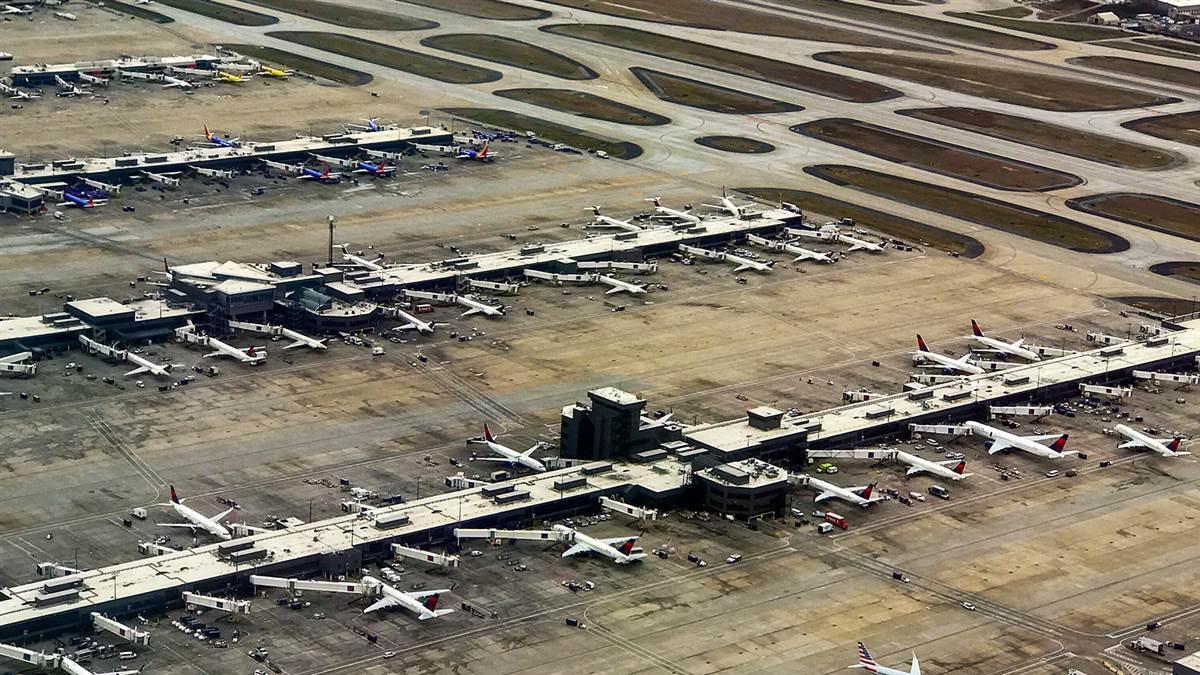Some airports are just better
Some airports are better than others. By that, I mean that for various reasons, some are more efficient, and therefore able to maximize the flow of traffic. It’s one thing to do this on a clear and sunny day, but the real measure of success comes in moving metal on low-weather days. Many of our airports in this country predate the Vietnam War, and some even predate World War II.

The best example we have of an airport that has the right design layout is Atlanta International (ATL). Built in a location that wasn’t constrained geographically, ATL has five parallel runways. Between them are set multiple terminals that are perpendicular to the runways. In the event of a gate change or even if a plane wanders into the wrong ramp, there is plenty of room to maneuver aircraft and equipment without clogging up the taxiways. The layout is designed to allow for an easy flow of both inbound and outbound traffic, and except for the most extreme weather events, this is what happens.
Dallas/Fort Worth (DFW) is another megaplex that works. Originally built between the two cities of Dallas and Ft. Worth with nary a soul in sight, it was designed in a similar fashion to ATL, with multiple sets of parallel runways, but with a better layout of taxiways that allow traffic to go around the entire airport instead of ever having to stop to cross a runway. You can taxi several miles without ever stopping, and this keeps the metal moving.
Denver is a unique setup because it is so big—larger than Manhattan—and because of the possibility of winds that can favor multiple runways at any one time, it is set up to handle operations in just about every direction. This airport, too, was built well away from the city to replace Stapleton, which also allowed for better departure and arrival planning near the Rockies. To look at it from above, it would seem like a very counter-intuitive design, but it actually works very smoothly, and is not as subjected to weather and aircraft performance issues as often as it might otherwise be. That said, when it does get bottlenecked, it does so in grand fashion. Microbursts and windshear are common in Denver, but fortunately, they move through relatively quickly.
If there is an airport design that hampers operations, it is one of two: an airport with crossing runways, like LaGuardia (LGA) in New York, or one with parallel runways with the terminal on only one side, such as Newark, New Jersey (EWR), or St. Louis, Missouri (STL). LGA uses both of their runways whenever they can, but traffic can only move so fast when you have to allow for spacing for a departure and an arrival on crossing runways all day long. EWR, on the other hand, always departs on the inboard runway and departs on the outboard. When it gets busy, controllers will ‘stack’ planes along 4L/22R at all of the crossing taxiways, and when they run out of space, they will pause departures to get them across at one time. The layout of the terminals, with space-constrained alleyways and gates that are not all able to handle the largest of planes, limits that maximum number of operations to about 75 an hour on a good day, and substantially less if the weather goes down.
Chicago O’Hare (ORD) is a true oddity in that the airport has been slowly rebuilt the last several years to put in six total east/west parallels. The international terminal is separated from the main domestic terminal, which can lead to some confusing taxi instructions. Further, the main domestic terminal is in the middle of the field, with a series of circular taxiways that dictate the flow of traffic. ORD controllers do a lot of intersection takeoffs to avoid taxi bottlenecks, and if there is anything ORD is famous for, it’s controllers that issue taxi instructions without waiting for a readback. You’re just expected to get it right on the first try.
Most airports, including these, have a certain rhythm to them, and once you have been there a couple of times, you begin to figure them out. That goes for taxi operations as well as for air ops. Some have a drastically different operation on the weekends versus during the week.
Fortunately, airlines provide pretty thorough briefing sheets on them, but the truth is that baptism by fire is the only way to truly understand how they work. And, yes, it is still okay—even preferred—that you ask for progressive or for help if you’re confused or lost. Even at ORD!


